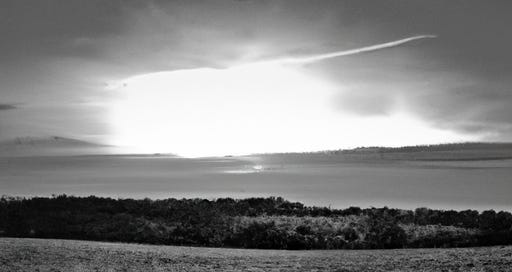Weirding a green, pleasant nation-state
“The eeriness of the English countryside” (2015) by Robert Macfarlane
Those of us interested in the strange and uncanny side of the UK, particularly the arts inspired by its rural and border landscapes and history, often feel like we live in two places at once. Even if we'll never visit the UK, a certain frame of reference inspired by fiction and film frequently provides a weird valence for our interactions with everyday life at home.
This subjective "weirding" was given a summation in “The eeriness of the English countryside” (2015) by Robert Macfarlane [@RobGMacfarlane ] which first appeared online in The Guardian on 10 April 2015. The article clocked and celebrated an accomplished fact: the ascendancy of a new thread in UK arts, one that paid attention to history and radical heritage, to rural and isolated landscapes posed as uncanny mirrors of both individuals and a state in the epoch of imperialist decay.
By 2015 Macfarlane had already participated as a kind of unofficial nonfiction laureate in this development. Each of his published works served as a roadmap to liminal sites of the non-traditional numinous.
After 2015 Macfarlane took on a more public role: introducing new generations of readers to out-of-print classics. He also published monographs in collaboration with visual artists, as he mentions in “The eeriness of the English countryside."
I have previously rhapsodized about Macfarlane here and here.
Reading notes:
M. R. James
[M. R. James's] mastery of the eerie: that form of fear that is felt first as unease, then as dread, and which is incited by glimpses and tremors rather than outright attack.
[James's method] intimation and aggregation.
[….]physical consequences tend to be gradual and compound: swarming in the stomach’s pit, the tell-tale prickle of the skin.
[….]understanding of landscape – and especially the English landscape – as constituted by uncanny forces, part-buried sufferings and contested ownerships.
[….]a realm that snags, bites and troubles. He repeatedly invokes the pastoral – that green dream of natural tranquillity and social order – only to traumatise it….
[….]Jamesian ideas of unsettlement and displacement. In music, literature, art, film and photography, as well as in new and hybrid forms and media, the English eerie is on the rise.
[….]explores the English landscape in terms of its anomalies rather than its continuities
[….]sceptical of comfortable notions of “dwelling” and “belonging”
[….]locates itself within a spectred rather than a sceptred isle.
Occulture
[….]This eerie counter-culture – this occulture – is drawing in experimental film-makers, folk singers, folklorists, academics, avant-garde antiquaries, landscape historians, utopians, collectives, mainstreamers and Arch-Droods alike, in a magnificent mash-up of hauntology, geological sentience and political activism.
My book The Old Ways (2012) has four eerie episodes in it, each narrated without analysis or interpretation. One took place at night on Chanctonbury Ring in the South Downs….
[….]renewed interest in classics of the tradition is in evidence
[….]We are, certainly, very far from “nature writing”, whatever that once was, and into a mutated cultural terrain that includes the weird and the punk as well as the attentive and the devotional.
"It's not even past"
[….]landmarks of this terrain are ruins, fields, pits, fringes, relics, buried objects, hilltops, falcons, demons and deep pasts.
[….]recent rise of the eerie coincides with a phase of severe environmental damage. In England, this has not taken the form of sudden catastrophe, but rather a slow grinding away of species and of subtlety. The result, as James Riley notes, is “a landscape constituted more actively by what is missing than by what is present”. This awareness of absence is expressing itself both in terms of a vengeful nature (a return of the repressed) and as delicate catalogues of losses (Skelton and Richardson’s poetry, for instance).
[….]“cupcakification” of the nation – this rise of “Mumfordland” – has generated a vigorous anti-pastoral counter-culture, animated by what he nicely calls “the terror in the terroir”
[….] the preoccupation of eerie culture with the English civil war (there in A Field in England, in the band name of These New Puritans, in Keiller’s Robinson in Ruins), a historical moment in which, as Wheatley puts it, the country was “so radicalised that normal people were forced into political positions they had never been in before…
[….]Contemporary eerie culture is also drawn to the military and security infrastructure that occupies much of England’s land and air space, from Salisbury Plain to Otterburn to Foulness….
Peroration
[….]James looked forwards, and saw the English countryside not only as a place of beauty, calm and succour, but also as a green and deeply unpleasant land.
I will leave the last word to M. R. James, the final lines of his superb late story "A Vignette" (1936):
[….] and every now and again the question haunts me:
Are there here and there sequestered places which some curious creatures still frequent, whom once on a time anybody could see and speak to as they went about on their daily occasions, whereas now only at rare intervals in a series of years does one cross their paths and become aware of them? And perhaps that is just as well for the peace of mind of simple people.
Jay




